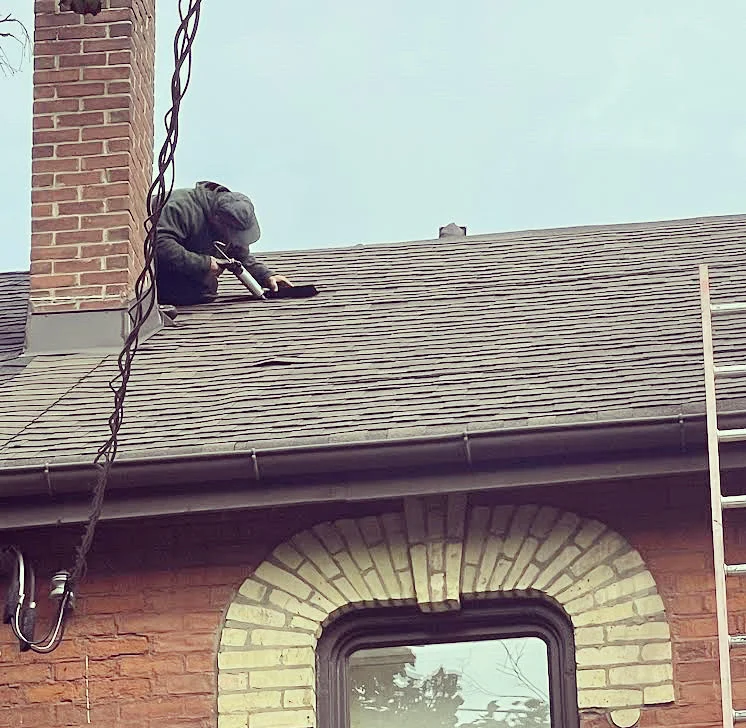
Your roof protects your home or business from the elements, providing shelter, insulation, and peace of mind. But when something seems off—like a leak, a missing shingle, or clogged gutters—it can be tempting to climb up and check things out yourself. The question is: is it safe to walk on your roof? The short answer? Not always. And here’s why.
Why Homeowners Consider Walking on Their Roof
Home and business owners often want to inspect their roof for:
- Signs of leaks or water damage
- Missing, curled, or cracked shingles
- Blocked gutters and downspouts
- General wear and tear from storms, snow, or falling debris
While your intention is good—preventive maintenance can extend your roof’s life—walking on your roof may not be the safest or most effective way to achieve it.
The Risks of Walking on Your Roof
Even if you’re confident with heights, roofs present unique hazards. Here are a few major concerns:
1. Personal Safety
- Slips and falls: Roofs can be steep, slippery, or unstable. Loose granules on shingles, wet spots, or algae growth increase the risk of falling.
- Structural weakness: If your roof has hidden damage or rot, stepping on the wrong spot could result in a fall through the structure.
- Injury liability: If a friend or family member offers to help and gets hurt, you could be liable.
2. Roof Damage
- Shingle breakage: Asphalt shingles aren’t designed for foot traffic. Walking on them can cause cracking, granule loss, and faster wear.
- Voided warranties: Some roofing warranties become void if there’s evidence of homeowner-caused damage.
- Leaks and structural damage: Pressure from foot traffic can damage underlayment or decking, creating weak points.
When Might It Be Necessary?
There are instances where accessing the roof may be unavoidable—for example, during repairs, inspections, or gutter cleaning. In these cases:
- Always use proper safety gear (harnesses, roof brackets, ladders)
- Never go up during rain, snow, or high winds
- Use walk boards or plywood sheets to spread your weight
- Avoid walking on older or visibly damaged roofs
Better yet, consider hiring a licensed roofing professional.
A Better Solution: Professional Roof Inspections
The safest and smartest way to assess your roof is by working with experienced roofing contractors. Regular inspections help detect issues early and reduce the need for emergency repairs—or risky DIY climbs.
Based on Industry Standards:
- Annual or bi-annual inspections are recommended, especially after extreme weather events
- Roofs over 15 years old or those showing signs of wear may need more frequent check-ups
- Commercial roofs, in particular, benefit from twice-yearly maintenance, especially in climates like Southwestern Ontario with seasonal extremes
Why Routine Maintenance Matters:
- Helps prevent leaks, structural damage, and mold
- Identifies issues early—before they become expensive problems
- Extends the life of your roofing system
- Maintains warranty coverage
How to Maintain Your Roof Without Risking Safety
Here are homeowner-friendly ways to take care of your roof without stepping on it:
- Visual inspections from the ground: Use binoculars to spot broken shingles or debris
- Clean gutters safely from a ladder (never overreach or stand on top rungs)
- Trim nearby trees to reduce the risk of fallen branches
- Schedule professional inspections after storms or at least once a year
Trust the Experts at Luso Roofing
At Luso Roofing, we understand the importance of proactive roof maintenance and the risks involved in DIY roof inspections. Whether you’re a homeowner or a business owner, our experienced team offers reliable, safe, and thorough roofing solutions throughout Windsor and Southwestern Ontario.
Don’t risk your safety or your roof. Let us help you with inspections, repairs, or full replacements—done right the first time.
📞 Contact us today to schedule your roof inspection.
Stay safe. Stay covered. Trust Luso Roofing.
Email: info@lusoroofing.com
Phone: +14168772020
Address: 684 St Clarens Ave, Toronto, ON M6H 3X1, Canada
